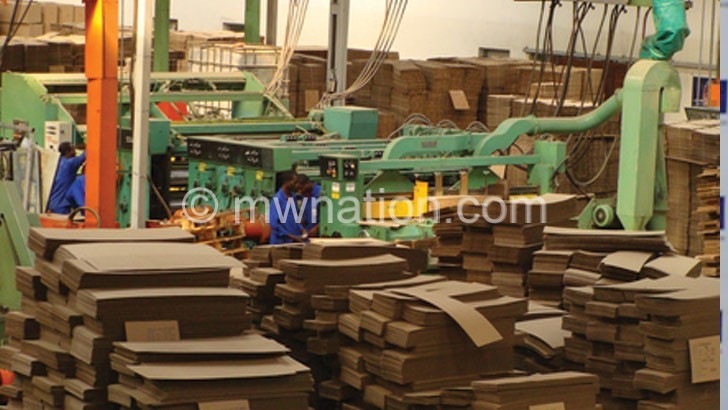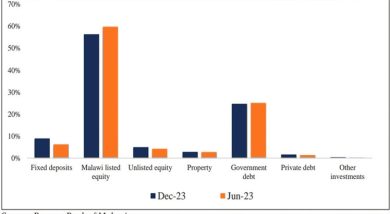Covid-19 knocks manufacturing
Manufacturing output continues to decline occasioned by the global containment measures instituted to stop the spread of Covid-19, the Malawi Confederation of Chambers of Commerce and Industry (MCCCI) has said.
MCCCI figures show that as at February 2021, only 7.3 percent of manufacturing firms were operating at optimal levels of between 76 percent and 100 percent.

This is contrary to 37.5 percent of the firms that were producing at a capacity of between 76 and 100 percent before the pandemic. Figures further show that by August 2020, only 9.1 percent of firms were producing at full capacity.
This means the percentage of firms producing at full capacity has shrunk by 30.2 percentage points from pre-pandemic period and now, according to MCCCI.
The private sector lobby group said the falling output has left an estimated 92.7 percent of firms producing below capacity. Of these, 24.9 percent are producing at between 51 and 75 percent, 36.2 percent are producing at between 26 and 50 percent, 20.9 percent are producing at between 11 and 25 percent while 10.7 percent are producing at between one and 10 percent.
MCCCI said the Covid-19 pandemic has altered the balance sheets of private business by “massively undermining income inflows”.
Reads the paper in part: “The containment measures instituted to stop the pandemic have heavily slowed down demand and supply chains worldwide to the detriment of local businesses in terms of productivity and revenue margins.
“Our analysis of the impact of the Covid-19 pandemic on businesses conducted in February 2021 shows that a large percentage of businesses are operating below their optimal capacities.”
Among others, MCCCI said that businesses continue to operate in a chronically challenging business environment due to, among others, the impact of Covid-19 pandemic, cost and quality of supply of electricity, charges and quality of supply of telecommunication, cost of finance, transportation costs and taxation issues exacerbated by smuggling.
“This has resulted in closure of businesses and retrenchment of workers,” reads the paper.
While manufacturing is no longer the primary driver of the economy, with its contribution to gross domestic product (GDP) at 9.1 percent, it still influences the economy to a large degree, particularly for unskilled workers.
In an interview, Employers Consultative Association of Malawi executive director George Khaki said there is need for government to look at ways of creating an enabling environment for the manufacturing sector in the face of the Covid-19 pandemic.
“This can be attained, by introducing incentives to the manufacturing sector,” he said.
Reserve Bank of Malawi (RBM) figures indicate that in 2020, the manufacturing sector registered a growth of 3.8 percent, which is lower than the 7.6 percent registered the previous year.
In its January-June 2021 Monetary Policy Report, the RBM said that few sub-sectors that sustained the positive growth for the manufacturing industry included those in the production of plastics and sanitisers as demand for these have increased due to the pandemic.
“Logistical challenges emanating from travel restrictions and shortage of foreign exchange affected the importation of raw materials for this sector as well as exportation of its finished goods,” reads the report.
Despite the Malawi Government implementing policies aimed at supporting the private sector and promoting value addition such as the Malawi Growth and Development Strategy III, National Industrial Policy and National Trade Policy, the country continues to witness slow industrial growth.
‘The United Nations Industrial Development Organisation ranks Malawi alongside Burundi and Chad as some of sub-Saharan Africa economies to have experienced low industrialisation with manufacturing value added share falling since 1990. n





